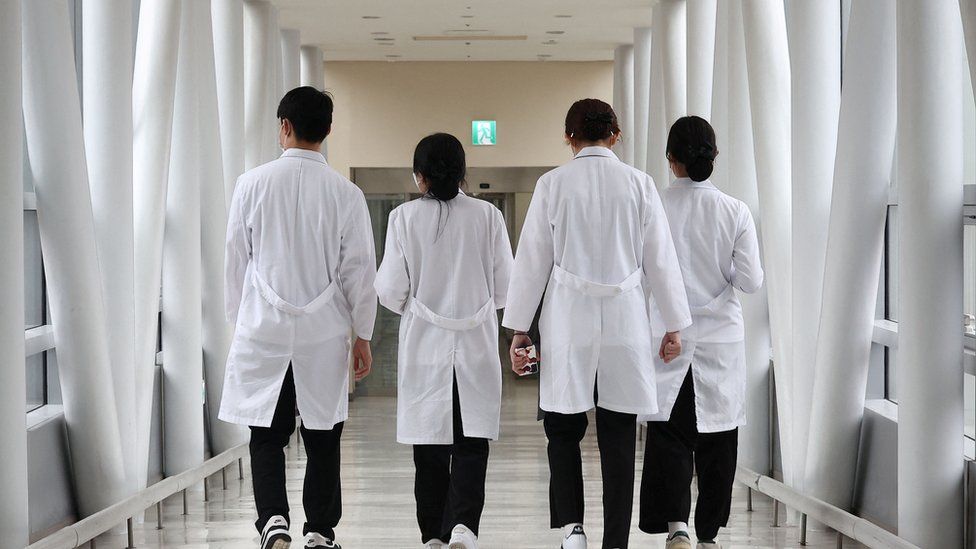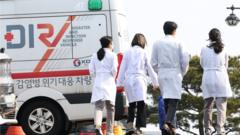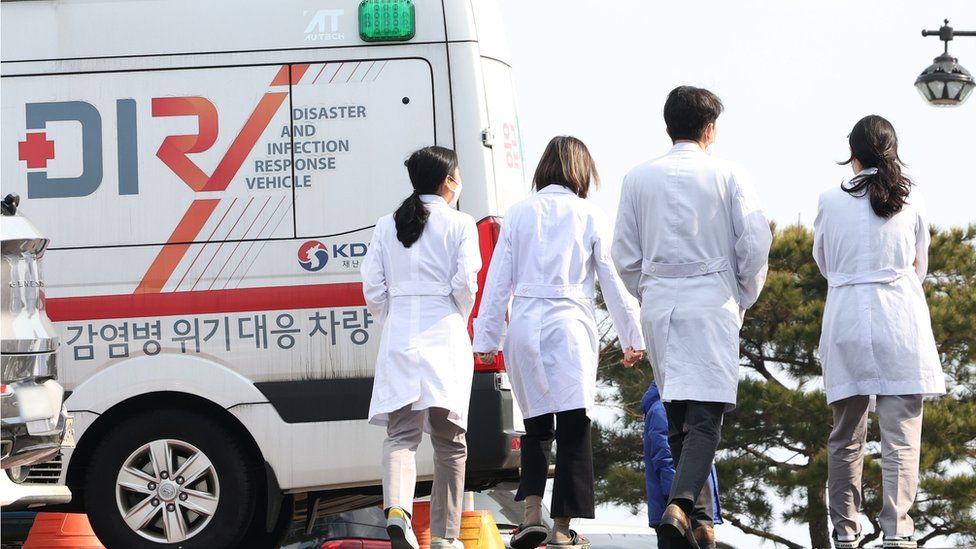
South Korea’s government has launched an investigation into the death of a woman in her 80s after her ambulance was denied entry to several hospitals due to the ongoing doctors strike.
The patient died in the ambulance after suffering cardiac arrest.
About 70% of junior doctors have been on strike for the past week protesting plans to train up more physicians.
That’s put emergency rooms under pressure, with the government alleging doctors have risked public health.
Paramedics in the city of Daejon on Friday had called around seven hospitals to take the woman, but were turned away due to a lack of staffing and beds, local media reported.
She was eventually admitted to a public university hospital 67 minutes after she first called for help, but was pronounced dead on arrival.
On Tuesday, government officials said they would investigate the case, which has been widely reported in South Korean media.
It is believed to be the first death linked to the doctor strikes, where interns and residents are protesting government plans to add more doctors due to competition fears.
Emergency rooms have been under significant pressure with low staffing levels. Surgeries have been postponed and patients have had to be transferred to other hospitals, local media report.
More than 9,000 have refused to come into work, while about 10,000 have submitted resignations at hundreds of hospitals across the country.
Interns and residents make up rank and file staffing in emergency wards so their absence has been widely felt, with hospitals having to operate on contingency settings, officials say. The country last week put the healthcare system at the highest crisis level.
The protests have escalated into a tense political stand-off, with officials threatening legal action.
On Tuesday, the government threatened to execute statutory powers to strip doctors of their practicing licences if they didn’t return by the end of the month.
President Yoon Suk-yeol has refused doctor demands to scrap his policy of increasing the number of graduates by 60%, saying the country needs to address its shortage of physicians as it faces the challenges of a rapidly ageing population.
South Korea has one of the lowest doctor-per-patient ratios among the group of OECD countries – only 2.5 per 1,000 people – and significant shortages in critical practices such as obstetrics and paediatrics.
Successive governments have tried to open up medical school placements – but have consistently come up against stiff opposition from doctor groups.
Public health experts say that doctors are acting out of their own commercial interests.
As South Korea’s healthcare system is highly privatised – with more than 90% of hospitals fee-paying – the medical profession is reluctant to open up to more competition and potential losses in income.
“But there’s no way South Korean people should endure inconveniences just to fulfil the doctors’ interest,” Prof Jeong Hyoung-sun, a professor of health administration at Yonsei University said.


